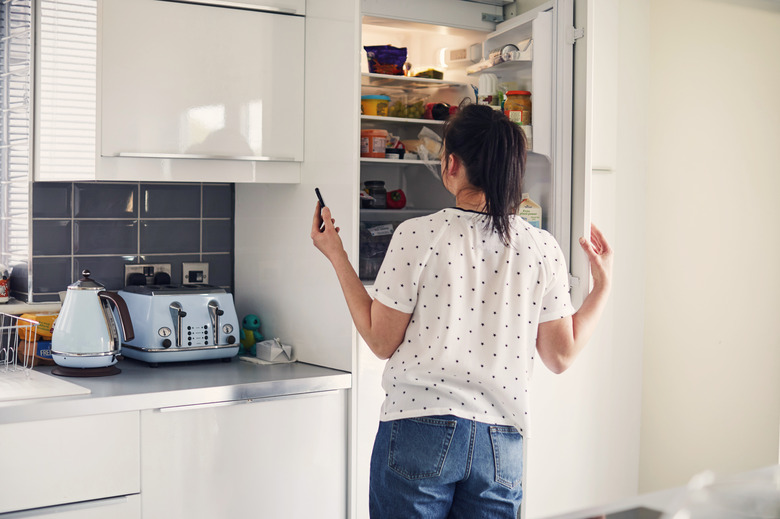GE Refrigerator Condensation Problems
Unlike a person's exercise routine that causes sweating, a GE refrigerator that's sweating inside doesn't mean it's working too hard. It just means that too much humidity is causing condensation problems in the refrigerator's interior. The solutions to this problem are typically easy to diagnose and correct.
Powered-Up GE Refrigerator is Sweating Inside
Powered-Up GE Refrigerator is Sweating Inside
When a GE refrigerator is powered up after it's been shut down, such as during a new installation or a move to a new location, condensation may initially form on its interior. This is perfectly normal according to the experts at GE. The condensation should dissipate after 24 hours or after the refrigerator stabilizes at room temperature.
Open Doors and Condensation Problems
Open Doors and Condensation Problems
Too much humidity in refrigerators is often caused by frequent door openings or by doors that don't completely close. Each time you open a refrigerator door, the warm air or humidity from your kitchen enters the fridge. When this air meets the cool air inside the fridge, condensation can build up on interior walls or other refrigerator parts, such as the crisper drawers and shelves.
If you've ever thought that you firmly closed the refrigerator door but walked in the kitchen later to see it slightly ajar, you know how easy it is to do this. And when the doors don't securely close, your kitchen's warm or humid air can flow inside the cool fridge and produce condensation. Make sure your refrigerator is properly leveled according to the instructions in your GE user manual. Also, check to make sure that items in your refrigerator are placed where they don't prop the door open.
Uncovered Containers and Moist Foods
Uncovered Containers and Moist Foods
If you place uncovered containers of beverages or food in your refrigerator, the moisture in these items can transfer to the air in the fridge and cause too much humidity in the refrigerator. Seal or cover containers that contain liquids or food to mitigate moisture problems.
Many veggies contain lots of moisture, such as lettuce, other greens and celery. To remove moisture from a refrigerator that's caused by food, line your vegetable crisper drawers with paper towels to absorb the excess moisture and keep water from collecting on fridge surfaces.
Door Gasket Dollar Bill Test
Door Gasket Dollar Bill Test
You can perform a cost-free test to ensure that your refrigerator door gasket is correctly creating a moisture-proof seal between your refrigerator door and the fridge's interior. Simply place a dollar bill between the door gasket and the refrigerator wall where the door closes. Now, remove the dollar bill by pulling it. If it takes effort to remove it (or if you think you can't remove it without tearing the bill), the seal is strong. If you can easily remove it because the gasket doesn't put up a lot of resistance, it's time to order a new refrigerator door gasket.
Defrost Cycle Condensation Problems
Defrost Cycle Condensation Problems
When the defrost cycle kicks in to keep the freezer walls in a GE refrigerator frost-free, it generates warm temperatures. And when this warm air meets the cold air inside your freezer, it may cause some condensation on the inside walls and shelves. As soon as the defrost cycle is complete, the appliance will return to normal operation and the condensation will disappear.
